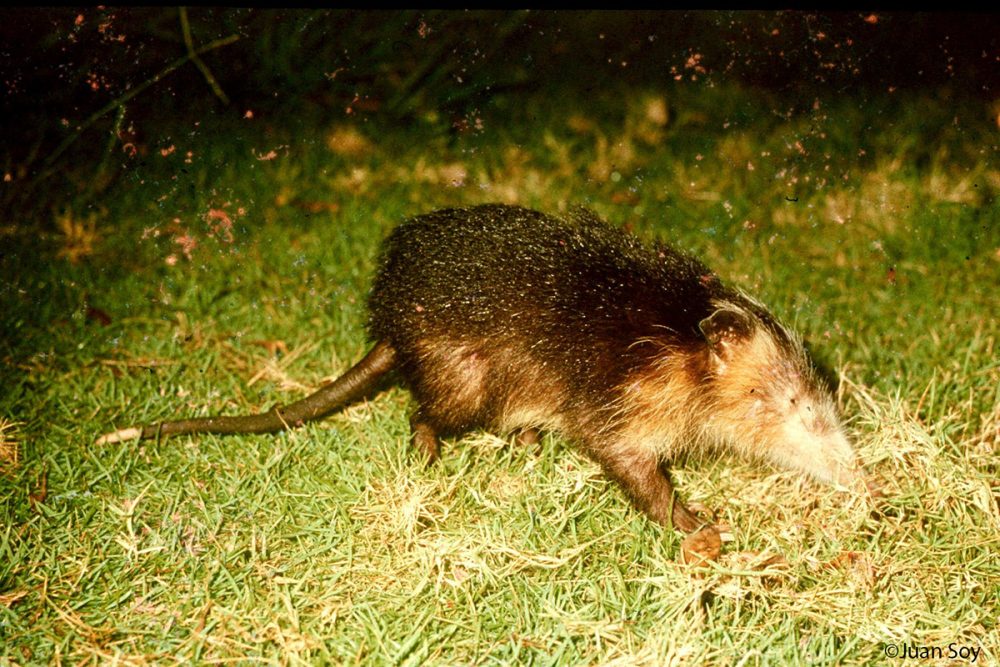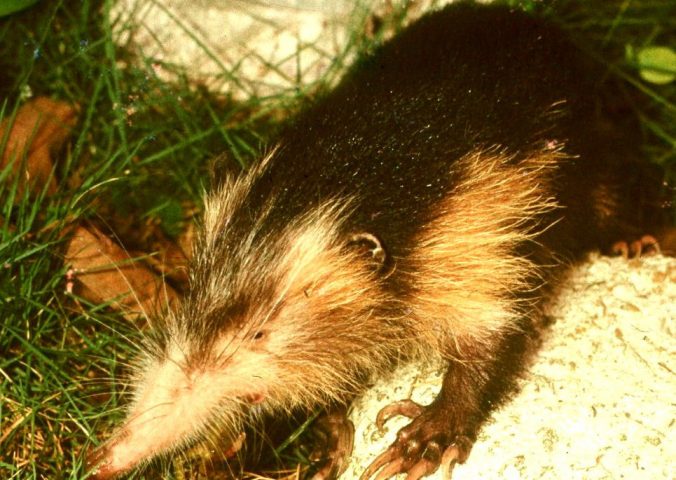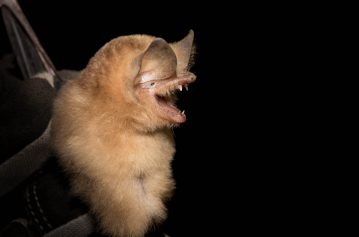About
Solenodons are one of the few venomous mammals, with venom in their saliva.
There are just two living species of solenodon – the Hispaniolan solenodon and Cuban solenodon – and they are among the top 10 most evolutionarily distinct mammals on Earth. They are the last survivors of a diverse group of ancient insectivores which inhabited the Caribbean and lived alongside dinosaurs at the end of the Cretaceous from 76 million years ago. Because of this, they can provide insight into ancient mammal phylogeny and physiology.
Solenodons are nocturnal, spending the day hiding in rock clefts, hollow trees or burrows which they dig themselves. Uniquely among all mammals, solenodons subdue their prey by injecting them with venom using their special grooved lower incisors. Their venom allows them to feed outside of their insectivorous diet; letting them subdue frogs, small reptiles or even some rodents.
The population trend of the Cuban solenodon is unknown with no accurate population estimate available. But it is thought to be threatened by deforestation, habitat degradation (logging and mining), and predation by feral cats and dogs.
- Order: Eulipotyphla
- Family: Solenodontidae
- Population: Unknown
- Trend: decreasing
- Size: 280-390mm
- Weight: 1kg
EDGE Score
Distribution
The Cuban solenodon is known from fossil sites across the island, but is today restricted to the Nipe-Sagua-Baracoa mountain range in the eastern part of the island.
Habitat and Ecology
No long-term study of the ecology of the Cuban solenodon has ever been done, and it remains much more poorly known than its sister species, the Hispaniolan solenodon. The Cuban solenodon is thought to be forest-dependent, occurring only in montane and sub-montane forests to elevations of 2000m above sea level, but there have been some recent reports from more disturbed habitats. Insects and spiders are the main prey species, although some small reptiles, roots, fruit and leaves are also eaten.



